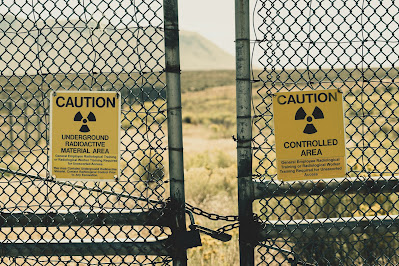
Could Sound Waves Solve Plastic Pollution?
Plastic pollution in our oceans is becoming a significant environmental concern, with the number of pollutants increasing rapidly every day. Researchers are exploring innovative ways to clean up the mess, including the potential use of sound waves. This article will discuss how sound waves can break down plastic, their potential application in the ocean, and the challenges they face.How Can Sound Waves Break Down Plastic?
Certain frequencies of sound waves may be able to break plastic down into smaller and smaller pieces through a process called acoustic cavitation. The vibrations in the frequencies of sound create bubbles in the plastic, causing it to fracture over time. Studies have shown that sound waves in the range of 20-100 kHz have some success in degrading common plastics such as PET and polystyrene.
Using Sonic Technology in the Ocean
Scientists have proposed installing sonic technology on boats, ships, or even the ocean floor to break down floating plastic pollution naturally. The Algalita Marine Research and Education, a non-profit group in Long Beach, California, is working on this initiative. However, there are still challenges to overcome, such as transmitting sound over long distances efficiently and ensuring that the frequencies do not harm marine life.
Effects on Marine Ecosystems
Initial studies suggest that the level of sound waves needed to break plastic would not significantly harm fish and other marine life if chosen carefully. However, the impact on marine life would depend on the intensity of the sound, the duration of exposure, and the species of marine life. Some studies even show that certain frequencies may help marine life, such as stimulating coral growth.
Removing Microplastics
After plastics are broken into small pieces, other technology may be needed to efficiently filter them out before they enter the food chain. Devices to achieve this are currently being tested and developed.
Challenges and Limitations
Sonic degradation has some limitations, as it only works on floating plastics and does not address the root cause of plastic pollution. Combining it with other solutions may make it more effective, and alternatives such as reducing single-use plastics will also be needed to achieve the best results.
In conclusion, using sound waves is a developing technology that may someday allow us to address the problem of ocean plastic pollution. With further research and support, this method could eventually be a helpful tool for ridding the oceans of plastic.










Excellent ideas for cleaning the planet and public health as well
ReplyDeleteSounds terrible to me
DeleteI agree
Deletei THINK earth is pretty fun
ReplyDeletegood job great work this is so useful and is the best :)
ReplyDeleteOk self-glazer
Delete